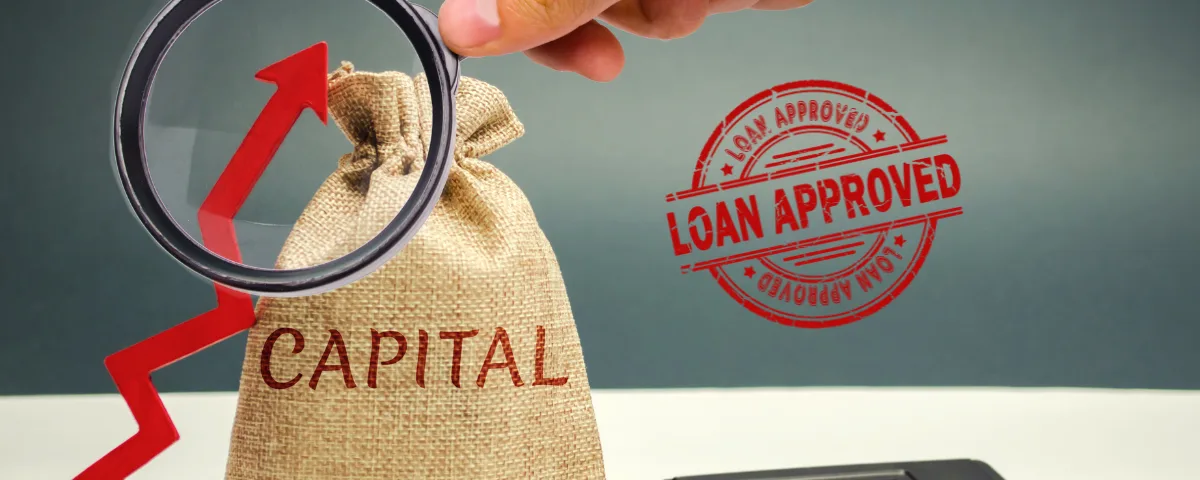What is a Working Capital Loan? Features, Eligibility & Documents

Table of Contents
Running a business often means balancing cash flow gaps. You may need to cover the payroll before the arrival of the receivables. And, of course, it’s very important that the inventory is stocked before the peak sales. That’s where Working Capital Loans come in.
These loans can help you cover the operations with financial liquidity without making long-term debts. However, before you think it’s all sunshine and rainbows, understand that interest rates may be higher than some other options.
Through this blog, I’ll explain what a working capital loan is and how it works. Plus, you’ll know the eligibility and how to get the best working capital loan with ease. Let’s start.
What is a Working Capital Loan?
A working capital loan is a type of short-term financing. It’s designed to cover a business’s everyday operational expenses when the cash flow is tight. These operational expenses can be anything from payroll, rent, and inventory to accounts payable.
Key Features of A Working Capital Loan
- Short-term Financing: Typically repaid within months to a few years.
- Quick Access to Funds: Often approved faster than traditional loans.
- Flexible Use: Covers payroll, inventory, rent, and other operational costs.
- No Collateral Required (Sometimes): Unsecured options available, though rates may be higher.
- Varied Loan Structures: Includes term loans, lines of credit, and invoice financing.
- Higher Interest Rates: Short repayment terms can lead to steeper costs.
- Credit & Cash Flow-based Approval: Lenders assess business revenue and credit history.
While long-term loans are used for major investments, working capital loans focus on maintaining liquidity. That ensures smooth operations between revenue cycles.
How Does a Working Capital Loan Work?
A working capital loan provides businesses with quick access to funds to cover short-term operational needs. Unlike something like a loan against securities, you won’t need to offer long-term collaterals either.
Here’s how it works.
- Application & Approval: The business applies with a lender, submitting financial documents (bank statements, tax returns, etc.). Approval can take hours to days, depending on the lender.
- Funding: Once approved, funds are disbursed as a lump sum (term loan) or a revolving line of credit.
- Usage: The business uses the capital for immediate expenses, such as bridging cash flow gaps or seizing growth opportunities.
- Repayment: Repaid over a short term (3-24 months) via fixed installments or flexible draws (for credit lines). Interest rates may be higher than traditional loans due to the shorter term.
Long-term financing options like and focus on funding major business expansions. But you can get working capital loans to keep daily operations running smoothly.
(Check out our long-term financing options. At Nihal Fintech, we offer the best loans against securities and loans against property.)
Eligibility for Working Capital Loans
To qualify for a working capital loan, lenders typically evaluate:
- Business Age: Most require at least 6 months to 2 years of operation.
- Revenue & Cash Flow: Consistent income to ensure repayment capability.
- Credit Score: Personal/business credit history (minimum 600+ often preferred).
- Collateral (if secured): Assets may be required for larger loans.
- Industry Risk: Some high-risk sectors may face stricter terms.
Startups may need stronger financials or alternative lenders, while established businesses get better rates.
Key Documents for a Working Capital Loan
Working capital loans are meant for business enterprises, and it’s fairly easy to avail of them. Here are the documents required.
Application Form
A fully filled and signed loan application form is the first step. It provides lenders with essential details about your business, loan requirements, and financial standing.
Passport Size Photos of the Borrower
Recent passport-sized photographs help verify the identity of business owners or directors, ensuring compliance with KYC (Know Your Customer) norms.
Valid Identity Proof of the Borrowers
Government-issued IDs (Aadhaar, PAN, passport, or driver’s license) confirm the borrower’s identity and prevent fraudulent applications.
- Pan Card
- Aadhar Card
- Passport
- Voters Id Card
- Driving License
Valid Identity Proof of the Business
Documents like GST registration, trade license, or incorporation certificate establish the legal existence of your business. These documents vary depending on the type of business.
- Copy of Sales Tax
- Copy of VAT filing
- Copy of Service Tax
- Copy of Excise Registration, applicable in some instances
- Income Tax Return of the company
- Utility Bills of water, electricity or telephone
- Registration Certificate under Shops and Establishment Act
- Pan ID
- Municipal Tax Bill in original and copy in the name of the company
- Memorandum of Association ( MOA)
- Articles of Association ( AOA)
- Certified Copy of Partnership Deed
- List of Partners/ Directors
Valid Address Proof of Business
Utility bills, rental agreements, or property tax receipts under the business name verify its operational or registered address.
- Passport
- Utility Bill: Telephone or Electricity bill not more than 3 months old
- Ration Card
- Trade License
- Lease Agreement
- Sales Tax Certificate
Valid Proof of Residence of Borrowers
Recent electricity bills, Aadhaar cards, or voter IDs confirm the personal address of business owners/partners.
Income Proof
Bank statements, audited financials, or income tax returns demonstrate the business’s revenue and repayment capacity.
Financial Proof
Balance sheets, profit & loss statements, tax returns, and cash flow projections give lenders insight into the company’s financial health.
Proof of Continuation of Business
Ongoing contracts, recent invoices, or business activity statements assure lenders that the company is actively operating.
Business Ownership Proof
Partnership deeds, MOA/AOA (for companies), or sole proprietorship declarations establish ownership structure.
Proof of Age of Borrowers
PAN card, birth certificate, or passport ensures borrowers meet the lender’s minimum age requirement (usually 21+).
Documentation of Collateral (if applicable)
Property papers, asset ownership proofs, or fixed deposit details secure the loan, often leading to better terms.
Other than these, any additional documentation would be as per the lender’s statutory requirements.
FAQs on Working Capital Loans
What is the typical repayment period for a working capital loan?
Most working capital loans have short repayment terms, ranging from 3 to 24 months, depending on the lender and loan type.
What’s the difference between a working capital loan and a business term loan?
Working capital loans are short-term and cover daily expenses, while term loans are longer-term, often used for large investments.
How does credit score affect approval?
A personal/business credit score of 600+ improves approval chances, but some lenders focus more on cash flow.
What if I miss a payment?
Late fees, penalties, or a credit score drop may apply. Some lenders offer flexibility—contact them immediately.
Can I prepay my working capital loan?
Many lenders allow prepayment, but some charge prepayment penalties—always check the terms before closing early.
Final Summary
Working capital loans can be a lifeline for businesses navigating cash flow gaps, seasonal slumps, or growth opportunities. They offer quick access to funds without long-term commitments, so your operations run smoothly. But in the interest of full transparency, the convenience comes at a cost–higher interest rates and shorter repayment terms.
Before applying, assess your business’s financial health and repayment capacity. And, gather all key documents for working capital loans and consult with our experts for any more queries today!
